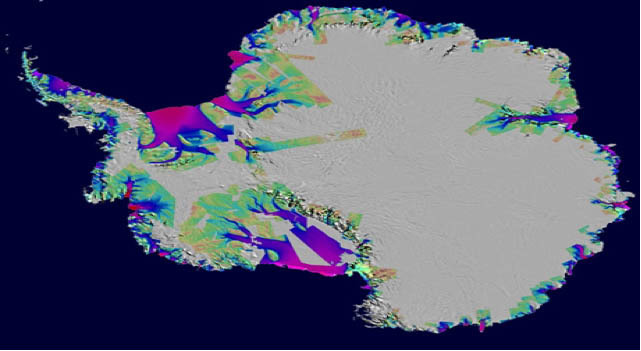News | March 22, 2009
Antarctic Ice Loss Speeds Up, Nearly Matches Greenland Loss

Ice loss in Antarctica increased by 75 percent in the last 10 years due to a speed-up in the flow of its glaciers and is now nearly as great as that observed in Greenland, according to a new, comprehensive study by NASA and university scientists.
In a first-of-its-kind study, an international team led by Eric Rignot of NASA's Jet Propulsion Laboratory, Pasadena, Calif., and the University of California, Irvine, estimated changes in Antarctica's ice mass between 1996 and 2006 and mapped patterns of ice loss on a glacier-by-glacier basis. They detected a sharp jump in Antarctica's ice loss, from enough ice to raise global sea level by 0.3 millimeters (.01 inches) a year in 1996, to 0.5 millimeters (.02 inches) a year in 2006.
Rignot said the losses, which were primarily concentrated in West Antarctica's Pine Island Bay sector and the northern tip of the Antarctic Peninsula, are caused by ongoing and past acceleration of glaciers into the sea. This is mostly a result of warmer ocean waters, which bathe the buttressing floating sections of glaciers, causing them to thin or collapse. "Changes in Antarctic glacier flow are having a significant, if not dominant, impact on the mass balance of the Antarctic ice sheet," he said. See this release for further details.
Citation: Recent Antarctic ice mass loss from radar interferometry and regional climate modelling, Rignot, E., Jonathan L. Bamber, Michiel R. van den Broeke, Curt Davis, Yonghong Li, Willem Jan van de Berg & Erik van Meijgaard, NATURE GEOSCIENCE, Vol.1, No. 2, pp106 ??? 110, doi:10.1038/ngeo102, 2008.





